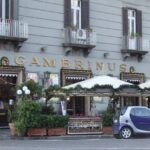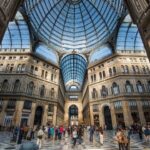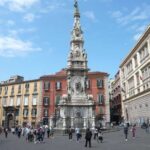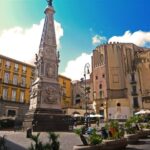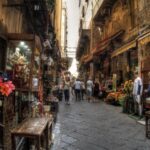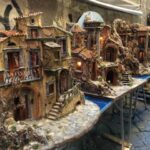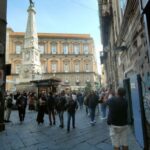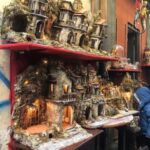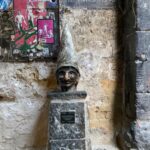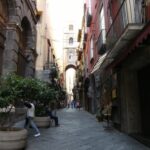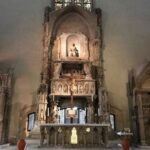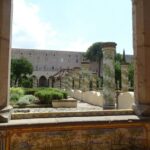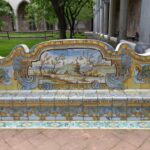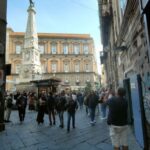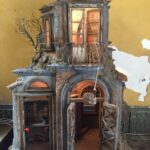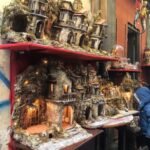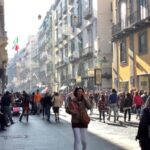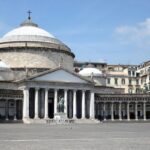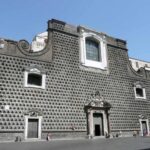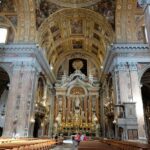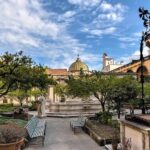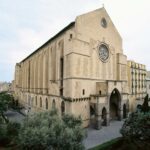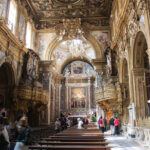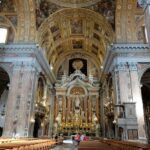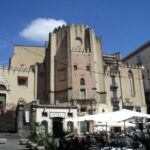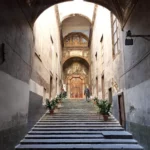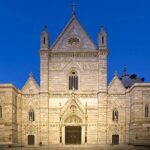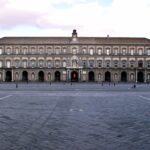pompeii and Naples guided tour
Private Guided Tour Pompeii and the historic center of Naples
Being an archaeologist, I excavated a house in Pompeii with my university professor. An incredible experience that I will always carry with me. Pompeii for me is simply a magical place that will leave you with an unforgettable memory of how a Roman city was made in all its public, private, civil, and religious aspects.
Pompeii was an ancient Roman city located near modern Naples in Italy. Its history dates back to around the 7th century BC when it was founded by the Oscans, an Italic tribe. Initially, it was a small agricultural community, but it grew over time into a prosperous and bustling city, largely due to its strategic location near the Bay of Naples and its fertile volcanic soil.
The history of Pompeii:
Greek Influence: Before becoming a Roman city, Pompeii was influenced by Greek culture, as were many other cities in the region. The Greeks established trading posts in southern Italy, including Pompeii, which contributed to the city’s cultural development.
Roman Conquest: In the 5th century BC, Pompeii came under the control of the Samnites, another Italic tribe. However, by the 4rd century BC, it was absorbed into the expanding Roman Republic during the Samnite Wars. Under Roman rule, Pompeii flourished as a commercial and trading hub.
Prosperity and Urban Development: During the 1st century BC, Pompeii experienced a period of significant growth and prosperity. The city expanded, and many public buildings, temples, theaters, and lavish villas were constructed. Pompeii became a vibrant center of commerce, art, and culture.
Mount Vesuvius Eruption: One of the most significant events in Pompeii’s history occurred on August 24, 79 AD, when Mount Vesuvius, the nearby volcano, erupted catastrophically. The eruption buried Pompeii and several other nearby towns under a thick layer of volcanic ash and pumice, preserving them remarkably well for centuries.
Rediscovery: Pompeii remained buried and largely forgotten for centuries until its rediscovery in the 18th century. Excavations began in the mid-18th century and have continued to the present day, revealing invaluable insights into daily life in ancient Rome.
Archaeological Site: Today, Pompeii is an archaeological site of immense historical and cultural significance. It attracts millions of visitors each year who come to explore its remarkably preserved ruins, streets, buildings, and artifacts. Pompeii provides a fascinating glimpse into the daily life, architecture, art, and society of ancient Rome.
Overall, Pompeii’s history is a tale of prosperity, destruction, and rediscovery, offering a unique window into the ancient world.
– Naples is a city rich in history, art, and traditions that span millennia. Here’s an overview:
History: Naples boasts a long and storied history that dates back to ancient times. Founded by Greek settlers in the 7th century BC, the city became an important cultural and commercial center under Roman rule. In the Middle Ages, Naples was a thriving maritime republic and a major center of Renaissance and Baroque art and architecture. The city has endured numerous conquests and occupations over the centuries, including by the Byzantines, Normans, Spanish, and Bourbons, each leaving their mark on its culture and identity.
Art and Architecture: Naples is home to a wealth of artistic treasures, including medieval churches, Renaissance palaces, and Baroque masterpieces. The city’s historic center, a UNESCO World Heritage Site, is filled with architectural wonders such as the Naples Cathedral, the Royal Palace of Naples, and the Church of San Domenico Maggiore. Naples also boasts world-class museums and galleries, including the National Archaeological Museum, which houses an unparalleled collection of Roman artifacts and ancient treasures.
Cuisine: Neapolitan cuisine is renowned worldwide for its delicious flavors and fresh ingredients. Naples is the birthplace of pizza, and the city’s pizzerias serve some of the best pizza in the world, including the iconic Margherita pizza topped with tomatoes, mozzarella, and basil. Other culinary delights include seafood dishes like spaghetti alle vongole (spaghetti with clams), sfogliatella (a flaky pastry filled with ricotta cheese and candied fruit), and espresso coffee.
Music and Theater: Naples has a vibrant musical and theatrical tradition that dates back centuries. The city is famous for its Neapolitan songs, or “canzoni napoletane,” which tell stories of love, loss, and longing. The Teatro di San Carlo, the oldest opera house in Europe, has been hosting world-class performances since the 18th century and continues to be a cultural hub for opera, ballet, and classical music.
Festivals and Celebrations: Naples is known for its lively festivals and religious celebrations that take place throughout the year. The Feast of San Gennaro, the city’s patron saint, is one of the most important religious festivals and attracts thousands of pilgrims and visitors to Naples each September. Other popular festivals include the Carnival of Naples, Easter processions, and the Festival of Santa Lucia.
Overall, Naples is a city steeped in history, art, and tradition, offering visitors a rich and immersive cultural experience unlike any other. From its ancient ruins to its vibrant street life and culinary delights, Naples continues to captivate and inspire travelers from around the world.
It is a tour aimed at understanding the historical and urban characteristics of Naples, a fascinating journey through streets, squares, churches, shops, to understand why this city is unique in the world.
A long history full of charm, mysteries and traditions that I will try to explain to you best. The tour lasts about 4 hours.
MEETING POINT + TOUR DURATION
Meeting Point Options: Cruise Ship Port, Address or Intersection
Duration: 7 hours
ITINERARY
In Pompeii we’ll visit:
– The Large Theatre
– The Small theatre
– A bakery shop
– A laundry
– the house of the Menander
– the main street named Abbondanza street
– A roman fast food
– The Stabian bathhouse
– The brothel
– The main square
– The plaster casts of the victims
In Naples we’ll visit:
– Jesus square
– Church of New Jesus (inside)
– Spaccanapoli street, the historical center (outside)
– Via dei Tribunali: historical center and neapolitan street food (outside)
– Chiesa Santa Maria del Purgatorio ad Arco (outside)
– San Lorenzo Maggiore / Medieval Gothic Church (inside)
– San Gregorio Armeno Nativitie scenes / artisans and their small and old shops (outside)
– Duomo and the San Gennaro Chapel (inside)
*This tour can be customized
WHAT’S INCLUDED
- Guiding Service
- Private trasportation round trip
ESTIMATED LOCAL CASH NEED
- Pompeii entrance fee: 18 €
- Meal


